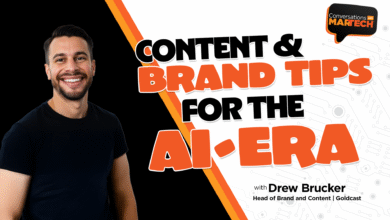Content vs Inbound Marketing: Why Both Still Matter

▼ Summary
– Content marketing focuses on creating valuable content like blogs and videos to attract and engage potential buyers.
– Inbound marketing is a broader methodology using content, SEO, and automation to attract, convert, and delight customers throughout their journey.
– Content marketing is a tactic within inbound marketing, primarily driving awareness, while inbound handles the entire customer journey.
– Both strategies work best together, with content building trust and inbound converting that attention into leads and sales.
– Loop marketing is an evolution of inbound marketing that incorporates AI for personalization and constant optimization.
Understanding the distinct yet interconnected roles of content marketing and inbound marketing remains fundamental for any modern marketing strategy aiming to attract and convert customers effectively. While often discussed interchangeably, these approaches serve different purposes and, when combined correctly, create a powerful engine for business growth. Content marketing acts as the valuable material that draws people in, whereas inbound marketing represents the comprehensive system designed to guide them toward becoming loyal customers.
Many professionals confuse these two disciplines. They are closely related, like siblings, but possess unique characteristics. Using one when you need the other can lead to disappointing results. In today’s environment, they function best as a unified team, with content serving as the essential fuel that powers the entire inbound methodology.
Content marketing involves the creation and distribution of valuable, relevant information, such as blog posts, videos, or guides, to attract and engage a specific target audience. The primary goal is not an immediate sales pitch but to provide genuine value, solve problems, and build trust. For instance, a software company might publish articles about improving team productivity rather than just listing its product’s features. The core idea is to establish authority and foster relationships, making sales a natural byproduct of that trust.
The advantages of a dedicated content strategy are significant. It is generally a cost-effective approach with the potential for compounding returns over time. Consistently publishing quality content enhances your online visibility through search engines and social sharing, increasing brand awareness. Most importantly, it builds credibility and trust with your audience, positioning your brand as a helpful expert. Studies indicate content marketing can be substantially less expensive than traditional advertising while generating a much higher volume of qualified leads.
Inbound marketing, on the other hand, is a broader, full-funnel methodology. It uses content as one component within a larger system that also includes search engine optimization (SEO), social media, email nurturing, marketing automation, and conversion rate optimization. Instead of interrupting potential customers, inbound marketing aims to be found by them when they are actively seeking solutions. It orchestrates the entire customer journey: attracting strangers, converting them into leads, closing them as customers, and delighting them into becoming promoters.
The benefits of an inbound approach extend beyond what content marketing alone can achieve. It facilitates engagement across the entire customer journey, not just at the awareness stage. By utilizing multiple channels and personalization through data and automation, it creates a tailored experience for each prospect. This focus on pulling in interested individuals typically results in higher-quality leads and improved conversion rates. Furthermore, the emphasis on post-purchase “delight” through onboarding and support boosts customer retention and loyalty. The use of various digital tools also provides richer data, enabling better measurement, optimization, and alignment between marketing and sales teams.
So, what are the key distinctions? Fundamentally, content marketing is a strategic tactic focused on attraction and trust-building, while inbound marketing is a holistic methodology managing the complete customer lifecycle. You can practice content marketing without a full inbound system, but you cannot execute a successful inbound strategy without high-quality content. Content is the indispensable attractor that brings people into your marketing funnel.
A common question is which approach delivers a superior return on investment. The answer depends entirely on your business objectives. If your primary goal is building an audience and increasing brand recognition, a strong content marketing effort might suffice. However, if you aim to generate leads, drive sales, and cultivate long-term customer relationships, you will see greater returns from a comprehensive inbound strategy that incorporates and amplifies your content.
In the current marketing landscape, choosing between them is counterproductive. With the rise of AI, changing algorithms, and reduced organic reach, simply creating good content is no longer enough. You need a system to capture and nurture the audience that content attracts. The most effective strategy unites them: using content marketing to build authority and trust across platforms, while inbound marketing captures leads and systematically nurtures them toward conversion. This ensures you own the customer relationship rather than just renting attention from a platform.
Integrating content into your inbound marketing plan involves a clear process. First, create content that directly addresses the challenges and questions of your target audience. Next, incorporate inbound elements like calls-to-action, lead capture forms, and landing pages to convert visitor interest into measurable leads. Then, use marketing automation to deliver personalized follow-up communication and nurture those leads. Finally, consistently measure performance to understand how your content influences lead generation and revenue, allowing for continuous optimization.
Frequently, marketers wonder if they are the same. They are not; content marketing is a component of the larger inbound methodology. Can you do inbound without content? Technically, yes, but it is ill-advised, as you would lack the valuable material needed to attract people in the first place. Budgeting should be viewed as an integrated effort, with resources allocated for both content creation and the tools required for lead management and automation. Many successful companies use platforms that combine these capabilities, streamlining the process from attraction to conversion.
Ultimately, content and inbound marketing are not rivals but essential partners. Content is the compelling actor that draws the crowd, and inbound is the director and crew that ensures the entire production is a commercial success. For the best results, view them as a unified duo, combining to conquer your marketing goals.
(Source: HubSpot Marketing Blog)





